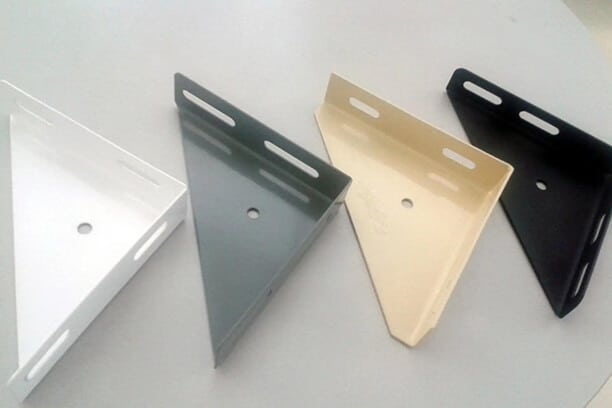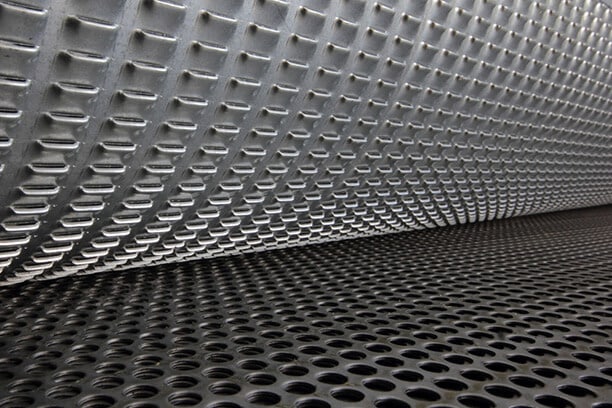Sheet metal fabrication is a highly versatile and cost-effective method used to make metal parts. However, being fabricated by some manufacturing techniques such as forming, punching, bending, and cutting, additional post-processing or finishing is often required to enhance the physical or aesthetic properties of the fabricated parts. For instance, aluminum sheet metal finishes offer durability and anti-rust properties.
There are several types of sheet metal finishes available for modern sheet metal fabrications. To simplify the process, this article will explore 11 common and high-quality sheet metal finishing options and provide guidance on selecting the appropriate finishes. Let’s get started!
11 Types of Sheet Metal Finishes
This part highlights 11 common finishing options for sheet metal fabricated parts. However, the options listed here are not comprehensive, and there are additional ones available. Runsom Precision can help when it comes to sheet metal fabrication and finishing solutions.
1. Standard/As-Machined Surface Finishes
A standard finish refers to the absence of any finishing done to the final part. This process is typically utilized when the base material satisfies the requirements of the application environment. For instance, stainless steel 316 parts used in corrosive environments usually do not require additional finishing, except for pickling and passivation, as the metal is naturally well-suited to such environments. Additionally, there are cases when a part’s natural appearance is considered attractive, providing another reason not to finish it.
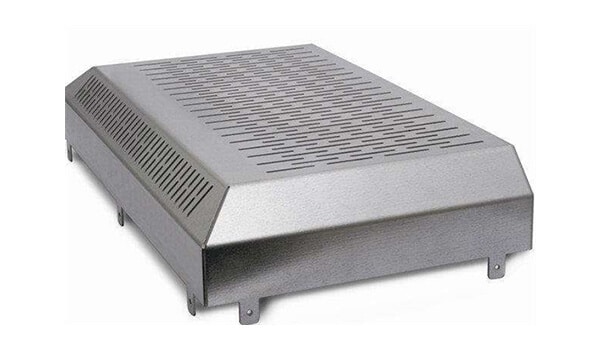
2. Electroplating
Electroplating, also known as electrodeposition, is a commonly used method for finishing sheet metal. It involves depositing a thin layer of sacrificial metal onto the surface of the sheet metal part. To achieve this, the sacrificial metal is placed on the anode while the sheet metal part is placed on the cathode in the presence of an electrolyte. The two metals are connected by electric current and chemically bonded together.
Various electroplating materials are available, each offering a unique combination of properties. At Runsom Precision, we offer electroplating services for sheet metal parts in nickel, tin, and electroless nickel. It’s crucial to keep in mind that when using electroplating, the original part’s tolerances must consider the final plating’s thickness.
The process of electroplating, depending on the sacrificial metal used, can enhance a part’s conductivity and make it more resistant to radiation, making it a popular method for producing radiation shields.
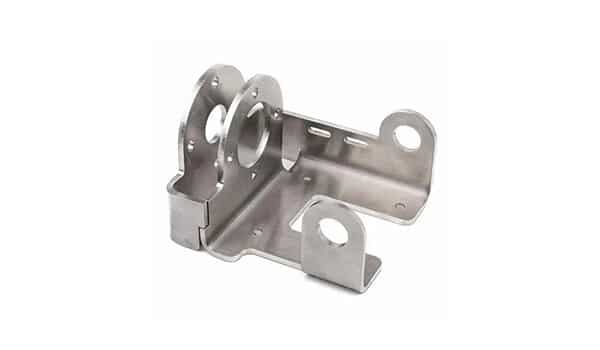
3. Bead Blasting
Bead blasting is a common finishing process used in sheet metal. It utilizes sand or glass beads as the abrasive medium, making it less harsh than typical sand/grit blasting. This method employs lower air pressure, resulting in less material removal from the surface of the part. The primary aim of bead blasting is to eliminate tool marks or other unsightly imperfections, resulting in a uniform surface finish. Additionally, bead blasting can conceal the grain direction on sheet metal, rendering it beneficial for creating a consistent appearance for laser-cut metal parts.
Regarded as a visually appealing finish for sheet metal, bead blasting produces a matte finish, making it a popular choice for aluminum sheet metal parts that demand high visual quality. Bead blasting can be coupled with other finishing processes as required. This finish is particularly well-suited for parts that require aesthetic properties.
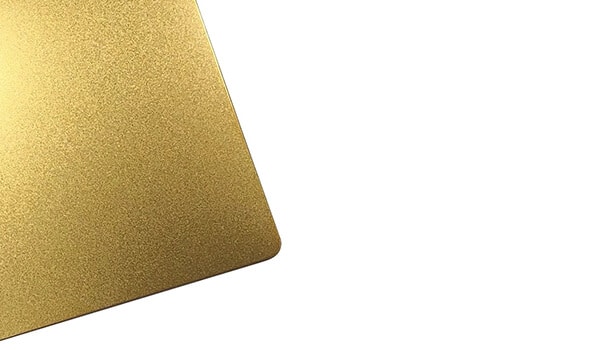
4. Anodizing
Anodizing is a type of sheet metal finishing mostly utilized for aluminum and titanium sheet metal parts. It involves using an electrochemical process to establish a corrosion-resistant layer on the surface of the sheet metal part.
During the anodizing process, the sheet metal part is submerged in an acid electrolyte bath and subjected to an electric current. The interaction of these elements converts the surface of the sheet metal part into an anodic oxide layer that is entirely integrated into the part surface.
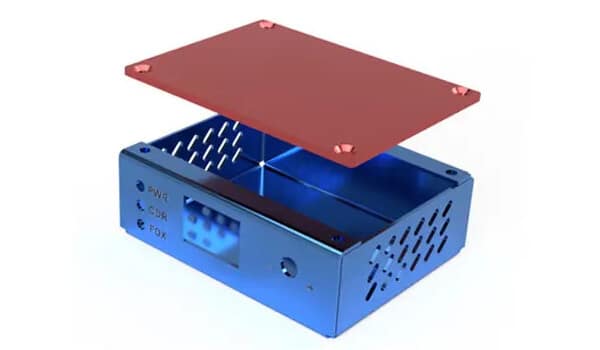
Anodizing can be categorized into three primary types, and each type is further divided into two classes.
- Type I: This type is less prevalent than the other two types and is primarily utilized in aerospace applications to create a thin yet highly corrosion-resistant coating.
- Type II: It is divided into Class 1 and Class 2, and generates a thin oxide layer that can be dyed in various colors for appealing appearances with good corrosion resistance. Class 1 denotes undyed coatings, while Class 2 refers to dyed coatings. While black is the most used color for Type 2 anodizing, other color options are also available such as clear, blue, red, gold, yellow, orange, green, and purple.
- Type III: This type produces a much thicker coating (about 2-4 times thicker than Type 2), making it more resistant to wear than Type 2 while still providing the same level of corrosion resistance. Class 1 denotes a clear hard coat, while Class 2 refers to a black hard coat.
Anodization can provide a range of surface finish colors. It’s a versatile finishing process utilized in the production of mechanical parts, precision instruments, aircraft and automotive components, and many more.
5. Electroless Nickel Plating
As the name implies, it differs from other plating methods in that it utilizes a chemical bath to plate the part rather than relying on the electrolytic effect for plating materials.
Nickel plating is a type of coating that comes with varying degrees of phosphorus content, which can enhance the corrosion resistance of the plating while also decreasing its hardness and wear resistance. The significant advantage of this coating type is that it uniformly covers all surfaces, even those that are inaccessible or challenging to reach using other coating methods. Consequently, it is one of the more suitable manufacturing finishes for sheet metal parts with intricate shapes. Additionally, electroless nickel plating can be employed on a broader range of metallic surfaces. This finish can also undergo heat treatment to enhance its mechanical properties.
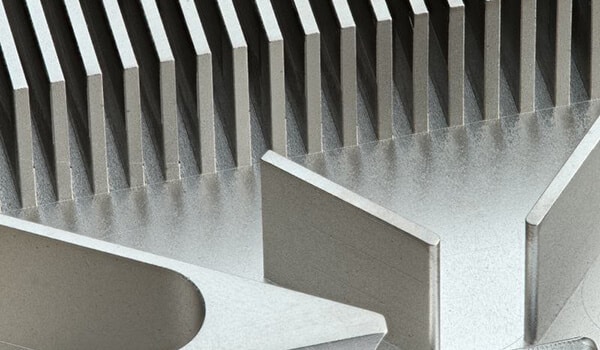
6. Powder Coating
When compared to other manufacturing finishes for sheet metal, powder coating offers one of the broadest ranges of colors available. It can also create different surface finishes, including textured, glossy, semi-glossy, metallic, and flat finishes.
Powder coating is a cosmetic processing process that involves the application of powdered paint to the surface of a material. In sheet metal fabrication, the sheet metal is then baked so that the paint adheres to its surface, resulting in a robust layer that is both corrosion and wear-resistant. As such, powder coating surpasses more conventional painting methods owing to the creation of a sturdy layer outside the component.
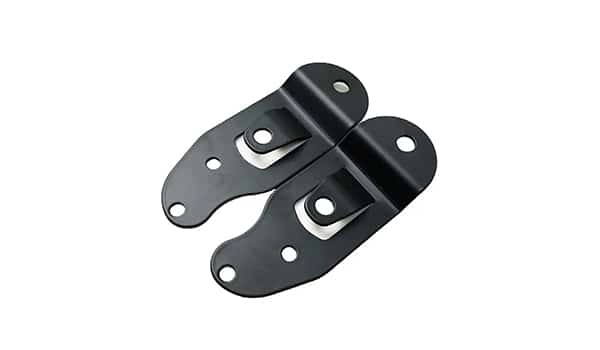
7. Electrophoretic Painting
Electrophoretic painting, also known as e-coating, is a method of applying paint to metal surfaces using an electric current. This process enhances the durability of products by providing better protection against corrosion. Although similar to powder coating, e-coating offers unique benefits that set it apart.
The e-coating process involves immersing sheet metal parts in a chemical solution that contains epoxy resin, paste, and deionized water. By applying a specific voltage to the solution, the coating is made to stick to the metal. This precise technique guarantees a uniform thickness with micron-level accuracy across the entire surface.
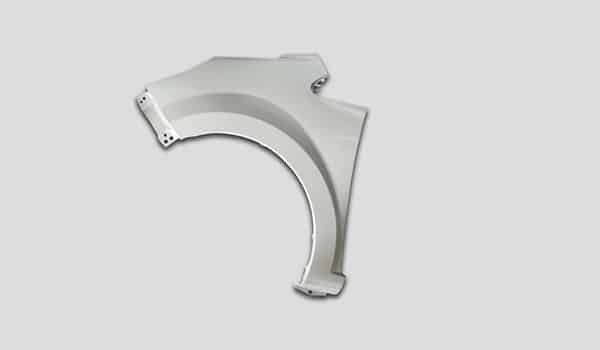
8. Gold & Silver Plating
The application of gold and silver coatings to a metal part involves utilizing an electroplating process.
Gold is a superb conductor that is also resistant to corrosion, tarnishing, and oxidation. As a result, it is an ideal coating for electrical contacts. Additionally, gold offers excellent solderability, making it well-suited for electronic components. Gold plating is classified into various types and classes. The types generally stand for the purity of the gold utilized in the plating, while the classes refer to thicknesses.
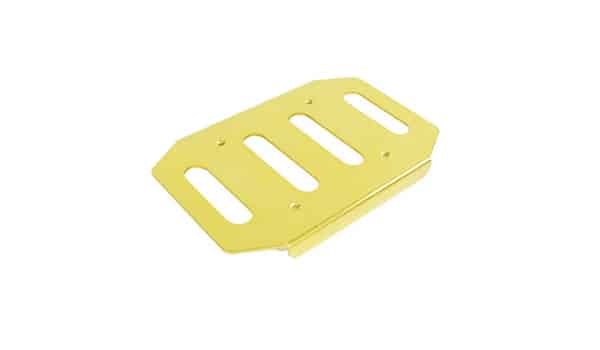
Silver plating outperforms gold plating in several aspects. It boasts better electrical and is less expensive than gold plating. Nonetheless, sheet metal parts are vulnerable to oxidation when applying this technique, which can eventually decrease their electrical conductivity.
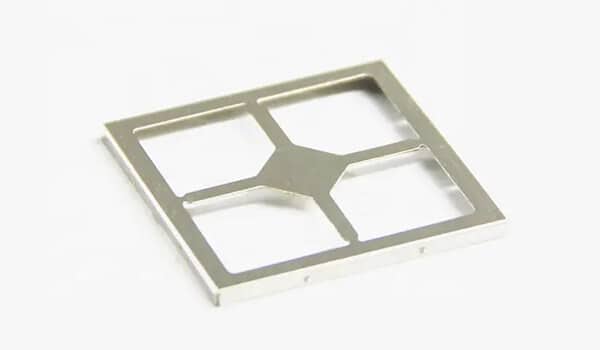
9. Chemical Film Coating
Chemical film coatings are known as sealant coatings, meaning they are only capable of providing corrosion resistance and do not provide any extra wear resistance. However, chemical film coatings offer added advantages of preserving electrical conductivity and promoting the bonding of paint and powder coatings to the base material. Furthermore, these coatings can be subsequently covered with anodized finishes. Below are the classifications of chemical film coatings:
- Type 1: This type is not frequently used because it contains hexavalent chromium, a tightly controlled chemical, leading to a gold or brown coating.
- Type 2: It uses zirconium, titanium, or trivalent chromium, resulting in a clear coat. This is the standard chem film coating utilized in aerospace and military applications.
- Class 1A: This type is aim to enhance the corrosion resistance of the base material while also serving as a primer for decorative or corrosion-resistant paints. This coating is typically thicker than Class 3 coatings.
- Class 3: This type of coating is developed to provide higher corrosion resistance without affecting electrical conductivity.
10. Passivation
Passivation is a surface finishing process involving subjecting stainless steel or other alloys to an acid solution to eliminate free iron from the surface, forming a “passive” metal.
The residual elements alter the reactivity of the metal’s surface, resulting in a more rust and corrosion-resistant finish. Processes such as welding, cutting, and grinding can alter the sheet metal’s surface by introducing foreign materials, making passivation a recommended next operation.
Passivation can enhance the corrosion resistance of the metal. However, for the process to be successful, the metal must be thoroughly cleaned before passivation; otherwise, it may not be effective. In some cases, surface damage during processes like cutting, grinding, or welding can result in corrosion, so passivation may be necessary. The process may need to be reapplied during the part’s service life.
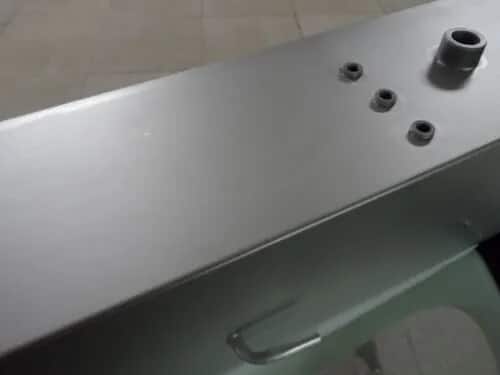
11. Electropolishing
Electropolishing, referred to as electrolytic polishing, electrochemical polishing, or anodic polishing, is an electrochemical finishing process that eliminates a thin layer of material from a metal part, primarily stainless steel or other comparable alloys. It’s particularly beneficial while polishing and deburring fragile or intricately shaped parts. This process can decrease surface roughness by up to 50%, resulting in a smooth, and ultra-clean surface finish.
Electropolishing can be regarded as the reverse of electroplating. Rather than adding a thin layer of positively charged metal ions, it employs an electric current to dissolve a thin layer of metal ions into an electrolyte solution.
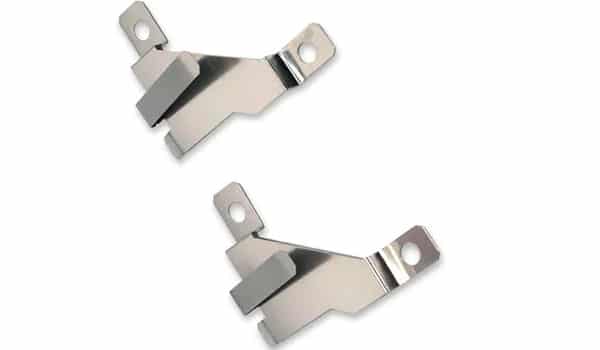
Tips for Choosing the Exact Sheet Metal Finishing Technique
Simply having knowledge about sheet metal finishes is not enough; it is also crucial to understand how to choose the appropriate finishing process. Take into account the considerations below to ensure you select the optimal sheet metal finishing solution:
Cost
The determining factor for the type of sheet metal finish to use is crucial. Examine all available options in terms of pricing before selecting the appropriate one. For instance, anodizing can be quite expensive. Therefore, it’s essential to understand how to balance cost and quality to get the best outcomes.
Types of Sheet Metal Material
The sheet metal finishing process you can use is dependent on the type of material you are working with. Certain sheet metal finishing processes are only suitable for specific materials. Anodizing, for instance, is only compatible with aluminum and titanium.
It is also crucial to note that materials have distinct levels of hardness. Employing abrasive finishing solutions like bead blasting on soft sheet metals can do damage to the component.
Purpose
Sheet metal finishes are ideal for enhancing either aesthetic or functional properties. Each of the finishing solutions mentioned before is fit for aesthetic use, albeit to varying degrees. Similarly, they are for functional use, again to varying degrees. For instance, finishing for stainless steel sheet metal is only necessary for aesthetic reasons. On the other hand, finishes for aluminum sheet metal are utilized for both aesthetic and functional purposes.
Thickness of Coating
The thickness of the coating is also an important consideration in selecting sheet metal surface finishes. A common observation among the aforementioned finishing solutions is their dependency on coating thickness. Here are some examples of coating thickness for the above finishes:
- Depending on the type, anodizing produces thickness varying between 0.5 µm to 150 µm.
- Electroplating typically yields thickness ranging from 5 µm to 25 µm.
- Powder coating typically yields thickness ranging from 35 µm to 200 µm.
Cycle Time
When selecting a finishing process, it’s crucial to take into account the production speed. A quick sheet metal finishing solution should be chosen if you have a tight deadline. Nonetheless, it’s important to balance this consideration with quality, as higher quality may require more time for production.
Conclusion
Various surface finishes are available for sheet metal fabrication, each with its unique visual effects and application purposes. They can provide added value such as aesthetic appearance, durability, corrosion resistance, and more. However, different surface finish options offer varying properties, performances, and processing costs, and not all are suitable for all metals. Hence, it’s crucial to consider their applications when selecting the appropriate surface finishes for your sheet metals. This article has discussed 11 high-quality finishing processes and considerations to help you select the exact one for your projects.
Your Sheet Metal Fabricated and Finishing Parts Solution – Runsom Precision
Runsom Precision has years of experience in sheet metal fabrication and provides access to a diverse range of surface finishing techniques of sheet metal fabricated parts through our extensive supplier network. Our products have always been tailored to meet the specific purposes and needs of our customers, which has driven us to continuously improve our processing techniques of sheet metal parts. Request an instant quote or directly reach out to our experts today!
Other Articles You May Be Interested in:

